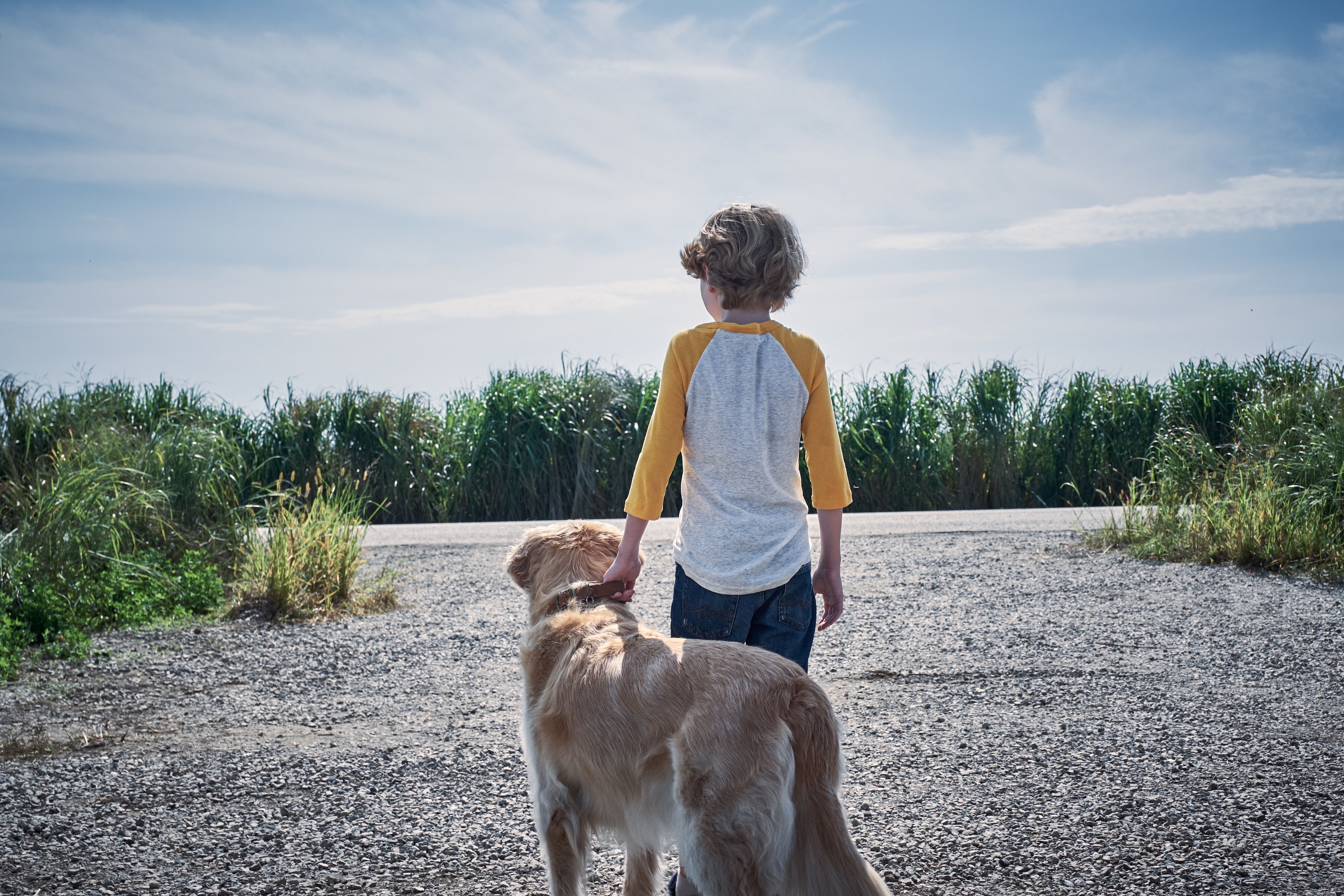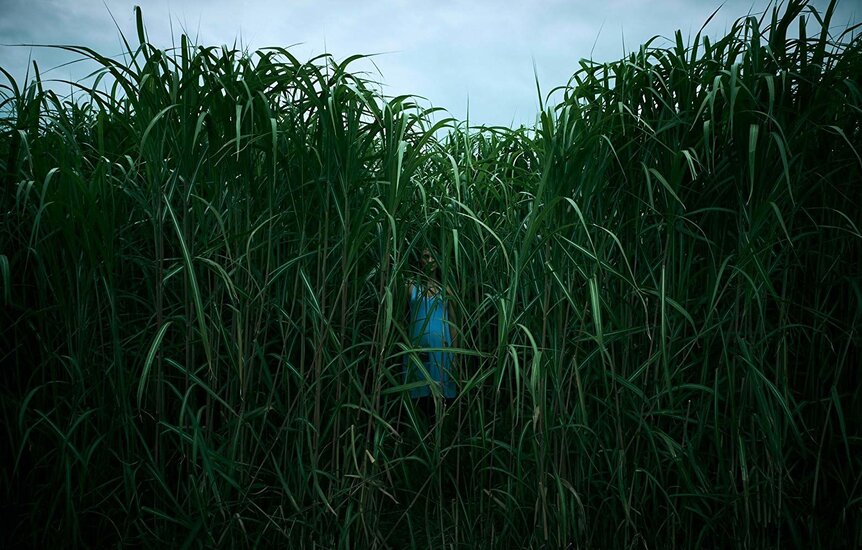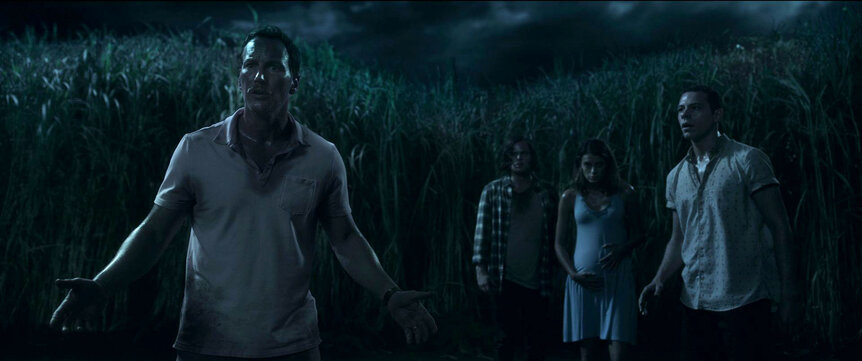Create a free profile to get unlimited access to exclusive videos, sweepstakes, and more!
The long, hard road to making Stephen King and Joe Hill's In the Tall Grass

In the Tall Grass, which just debuted at Fantastic Fest, is not one of horror master Stephen King's most well-known stories, even among huge fans of the prolific author's work. It's a brutal little short story he co-wrote with his equally talented son, Joe Hill, for Esquire in 2012, and other than an e-reader and digital audiobook release, it's been kept pretty low-key; the story hasn't even appeared in any of King or Hill's short story collections.
But five years ago it did manage to catch the eye of writer/director Vincenzo Natali, a longtime King fan who broke into the movie business with his inventive sci-fi indie Cube and has since been a big creative part of a lot of your favorite TV, including Hannibal, The Strain, and Westworld.
My first King novel was Cujo, which I read when I was in sixth grade. Being a big movie nerd with parents who didn't care if I watched scary stuff at a young age, I thought Cujo was a good starter for a “grown-up book” because I had seen the film already. Of course, that meant I was unprepared for the very bleak ending that book has, one that was not adapted to the big screen.
It was the other way around for Natali. He was around the same age I was when he read Cujo, but he didn't see the movie for a long time, thanks in large part to Canada's strict ratings system.
“In Canada, when a movie is restricted you could not see it until you were 18 years old, except on video,” Natali told SYFY WIRE. “Ultimately, I ended up watching all his movies on video, but you couldn't get into a movie theater unless you snuck in, which I did a few times. It was hard in those days, because they didn't have multiplexes as much. I remember buying a ticket for Annie and going to see The Thing, but that wasn't always possible.”
When he finally got around to the movie, he quite liked it. And many years later, after Natali established himself as a genre filmmaker to be reckoned with, he was approached by a producer friend who had a connection to both King and Hill, and an idea that he would be perfect to adapt this unflinching tale of people supernaturally lost in the tall grass next to a rural highway.
So he pitched his idea for the adaptation, which included the addition of a character named Travis, who's only briefly mentioned in the short story: the boyfriend of the very pregnant Becky, who comes looking for her after she gets lost in the titular tall grass.
“I thought if he comes to the field then it's going to be like Orpheus and Eurydice, with Orpheus in the underworld, and it'll be a love triangle with the brother,” Natail said. “Suddenly I could see there was a movie there.”
King and Hill seemed to agree, because they gave him the option. For a dollar.
Usually, these kinds of high-profile options run can five to seven figures, but that's not how they do it in Maine.
“You option the material for a dollar, but you have to reach certain benchmarks,” Natali said. “It's a very clever thing he does, because he avoids getting his projects trapped in development hell. You have to reach certain benchmarks, and if you don't then you can lose the option.”
One of those benchmarks is a tight turnaround time on the writing of the script. Natali was given three months to deliver a draft, but the timing of the deal was problematic for the writer/director. He had already committed to some TV projects, which meant that he had to bang out the first draft in just about three weeks.
“The very thought that Stephen King would read something I wrote, let alone something I had to write in three weeks, was really, really frightening,” he said.
But he met his deadline, and while he'll never know for sure if either King or Hill actually read the script, the option continued to the next step, which was to get it set up at a studio or production house in a timely matter.
But Natali soon found out that this story wasn't exactly studio material. It's one part psychological horror and one part gorefest, which includes violence inflicted on a pregnant woman. There's a particularly gruesome moment in the short story that he wouldn't bend on, calling it the “raison d'etre of the whole thing.”
Nobody wanted to make the movie, and having not met his obligation, Natali technically lost the option. This was five years ago.
A few years later, something big happened: It Chapter One came out and made all the money in the world. Suddenly anything with King's name on it was golden again, and Natali returned to King and Hill, who apparently always liked his vision. He was given the green light to continue trying to make the film.
Netflix, as the rare film funder that has deep pockets and leaves writers and directors alone, was a natural fit for this movie. Generally. Natali was quick to point out that they weren't just the bank, but thoughtful creatives as well.
And so it was that they went out and shot the film in the heat of a Stratford, Ontario, summer, when the real field of tall grass they needed was at its height.
“There was a lot of horticultural R&D involved in this,” Natali said. “The grass itself is an organism that we can't control, but we had to schedule the movie around the optimal period to shoot in it. It obtains a certain height, but then after that it starts to brown and flower and do all kinds of things we don't want. So we had this window and the whole production had to be built around this very specific time that was based on hearsay. We were basically just listening to the farmer.”
As far as shooting creatively to keep the single environment visually interesting, that wasn't a huge concern for Natali, which makes sense considering his debut film, Cube, is one of the best single-location films ever made.
“I do like one-environment films,” he said. “I find that far from being confining. They actually open things up, because it allows me to explore a different kind of space in different ways, and that's part of the fun. I charted this thing visually as something that would start very, very grounded. We begin the movie much like Stephen King writes, where you feel like this is a real place with real people that we can relate to, and then we go down the river and it's going to get weirder and weirder and weirder, until by the end it's utterly psychedelic. That was obviously part of the visual design and the fun of it.”
And you can tell that Natali had fun with this one. The camera is constantly floating around, sometimes grabbing bird's-eye shots, sometimes lost in the grass with the characters. Natali, much like King and Hill, seems to take great delight in putting his characters through hell, and we're right there with them, lost ourselves in the dense foliage where time and space are rubbery and inconsistent.
In the Tall Grass premieres on Netflix Oct. 4.




























